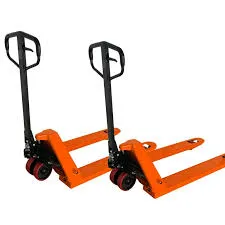


Understanding Chain Hoist Operation Safety, Techniques, and Best Practices
Chain hoists are essential tools in various industries, including construction, manufacturing, and logistics, for lifting heavy loads efficiently. A chain hoist consists of a chain, a lifting mechanism, and a hook, making it a fundamental piece of equipment for material handling. However, improper operation can lead to accidents, injuries, or equipment damage. This article will explore the principles of chain hoist operation, the techniques for safe usage, and best practices to ensure optimal performance.
The Principle of Operation
A chain hoist operates on a simple yet effective mechanical principle. When the operator pulls on the handle of the chain, the chain wraps around a drum, which subsequently raises or lowers the connected load. The lifting capacity of the chain hoist is determined by its design, materials, and construction. Most chain hoists can lift from a few hundred pounds to several tons, making their use versatile across various applications.
Chain hoists come in two types manual and electric. Manual chain hoists require physical effort from the operator, while electric chain hoists utilize electric motors to perform the lifting tasks. Regardless of the type, understanding the basics of chain hoist operation is crucial for any operator.
Safety First Precautions and Risk Management
Ensuring safety during chain hoist operation is paramount. Operators should be trained and familiar with the equipment before attempting to use it. Here are several key safety precautions to follow
1. Inspection Before Use Before operating a chain hoist, perform a thorough inspection. Check for signs of wear, damage, or corrosion on the chain, hook, and other components. If any defects are found, the hoist should not be used until repaired or replaced.
2. Load Capacity Awareness Each chain hoist has a rated load capacity. It is essential to understand this limit and never exceed it to prevent accidents. Always use a load that is within the specifications provided by the manufacturer.
3. Proper Rigging Techniques Using the right rigging techniques is critical for safe chain hoist operation. Ensure that the load is properly centered and secured before lifting. Those handling the load should keep a safe distance and remain clear of the lifting path.
4. Communication If multiple people are involved in a lifting operation, clear communication is essential. Utilize hand signals or radios to coordinate actions, thus reducing the risk of miscommunication and accidents.
5. Stable Environment Ensure the area around the hoist is clear of obstacles and that the surface is stable. The lifting area should be free from debris, and no one should stand under the lifted load.
Operating Techniques

To operate a chain hoist effectively, follow these techniques
1. Smooth Operation Operate the chain hoist smoothly to avoid jerking or sudden movements. Sudden actions can destabilize the load and lead to accidents.
2. Load Movement When lifting, make sure that the load is raised straight up and down. Swinging the load or raising it at an angle can create additional hazards.
3. Use of Brakes If your chain hoist is equipped with a brake system, always ensure it is engaged once the load has reached the desired height. This prevents accidental lowering of the load.
4. Lowering the Load When lowering a load, do so at a controlled speed. Avoid rapid descent to enhance load stability and minimize the risk of accidents.
Best Practices for Routine Maintenance
Regular maintenance of chain hoists enhances their longevity and ensures safety. Here are some best practices
1. Routine Inspections Schedule periodic inspections in accordance with the manufacturer's guidelines. Look for any signs of wear and tear, and address issues promptly.
2. Lubrication Proper lubrication of moving parts reduces friction and wear. Make sure to follow the maintenance schedule for lubrication specified by the manufacturer.
3. Training and Certification Ensure that all operators are trained and certified in proper chain hoist operation. Regular refresher training sessions can help maintain high safety standards.
4. Documentation Keep a log of inspections, maintenance activities, and repairs. This documentation can be beneficial for regulatory compliance as well as for tracking the performance of the hoist.
Conclusion
Chain hoists are invaluable tools that can significantly improve efficiency in lifting heavy loads. However, safety must always be the priority. By following established safety protocols, operating techniques, and maintenance best practices, operators can ensure that chain hoists function effectively while minimizing risks of accidents. Proper training and awareness will lead to safer workplaces and more successful operations.



